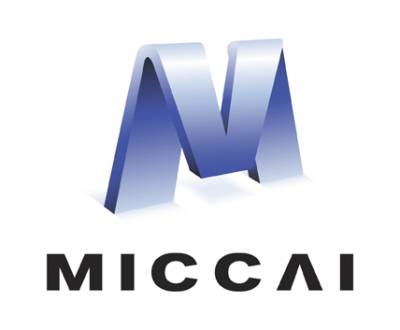Preparing a PDF Abstract
Why write a PDF abstract?
As in this example, a PDF abstract can contain a figure, a table, or equations, none of which can appear in a traditional text abstract. Keep in mind, however, that you must submit a text abstract for use by the reviewers.
Note: For hints on writing a high quality abstract that is more likely to be accepted, view the CinC Abstract Hints.
Also keep in mind that neither text abstracts nor PDF abstracts appear in print, except in the conference program book provided to attendees. If your abstract is accepted, your full (4-page) paper will be published in Computing in Cardiology, where it can be read and referenced by a worldwide audience.
The small amount of additional material that you can include in a PDF abstract may allow you to better inform readers about your work, and to attract them to your presentation. The key word here is small: there is very little space available in an abstract, so use it wisely!
Instructions
- If you use LaTeX:
-
- Download abstract.tex and cinc-abstract.cls.
- Edit abstract.tex, inserting your content.
- Spell-check your abstract.
- Format it as PDF using pdflatex, or another method of your choice.
- If you use MS Word 2007 or later, and prefer docx:
-
- Download abstract.docx (or abs-2012.docx).
- Open it in MS Word, inserting your content.
- Spell-check your abstract.
- Format it as PDF using Adobe Acrobat, or another method of your choice.
- If you use MS Word and prefer doc:
-
- Download abstract.doc (or abs-2012.doc).
- Open it in MS Word, inserting your content.
- Spell-check your abstract.
- Format it as PDF using Adobe Acrobat, or another method of your choice.
- If you use OpenOffice or LibreOffice:
-
- Download abstract.odt (or abs-2012.odt).
- Open it in LibreOffice or OpenOffice, and insert your content.
- Spell-check your abstract.
- Format it as PDF using LibreOffice’s or OpenOffice’s Export as PDF… feature, or another method of your choice.
Use the abs-2012.* file if you have any problem with the corresponding abstract.* file.
Check your PDF abstract to be sure that it meets all of the specifications below before submitting it.
Follow these rules when preparing a PDF abstract:
- The entire abstract, including its title block, must fit on a single page, within a 110×180 mm rectangle.
- The paper size is 140×215 mm (about 5.5 x 8.5 inches).
- Margins are 15 mm at top, left, and right, and 20 mm at bottom.
- Title block:
- The title block must match that of your text abstract exactly.
- Insert the title line(s) flush left at the top of the 110×180 mm rectangle, in 12 point Helvetica (or Arial) bold. The title should fit on one line if possible, and should not exceed two lines at most. Avoid the use of acronyms, and do not end the title with a full stop (period). Use mixed case, capitalizing the first word and all nouns, pronouns, adjectives, verbs, and adverbs, but generally not articles, conjunctions, and short prepositions, as in this example:
A Robust Algorithm for Edge Detection in Two-Dimensional Echocardiograms
Leave an empty (10pt) line below the title line(s). - Insert the author line(s) flush left in 10pt Helvetica (or Arial). For each author, include the full first name, middle initial (or full middle name if you prefer), and last name. Please follow the convention used in most English-language publications, which is to write given names first and family names last, even if it is customary in your nation to write them in the opposite order (as in many Asian nations and in Hungary). Omit titles and degrees, full stops (periods), and the word ‘and’ before the last author’s name. Mark the name of the presenter with an asterisk (‘*’), and separate the names of multiple authors by commas, as in this example:
Ralph A Alpher*, Hans A Bethe, George Gamow
Leave an empty (10pt) line below the author line(s). - Insert the affiliation lines flush left in 10pt Helvetica (or Arial). Give the name of the first author’s institution only, avoiding abbreviations if possible; also give (on the same line, if possible) the institution’s city, state or province if applicable, and country, using standard abbrevations, but omit the street address and postal code, as in this example:
Cornell University, Ithaca, NY, USA
Leave an empty (10pt) line below the affiliation line(s).
- Insert the body of the abstract in 10pt Times Roman (or Times New Roman). The first line of each paragraph should be indented by 5 mm; do not insert extra space between paragraphs.
- Don’t sacrifice legibility by attempting to fit in too much.
- Include the full text of your plain text abstract, deleting only material made redundant by your additions.
- If you include a color figure, be certain that it is legible if printed in black and white, as it will be in the program book if accepted.
- Don’t restrict or password-protect your PDF abstract. These PDF options can complicate the process of adding page numbers in the program book.
PDF abstracts that do not comply with these rules will not be printed in the conference program; the text versions of these abstracts, if accepted, will appear in their places.


